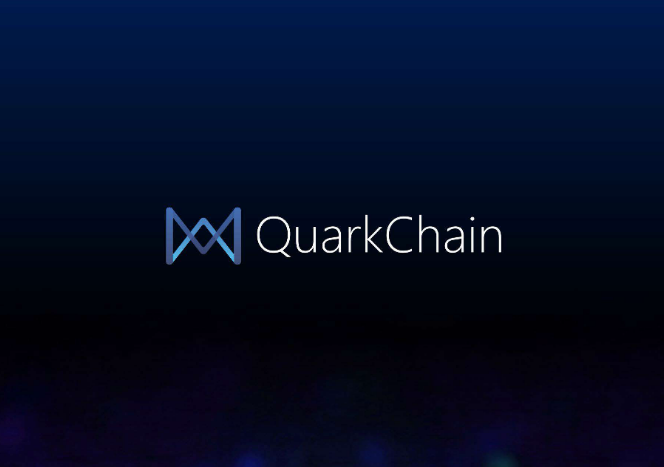
QuarkChain is a blockchain that utilizes sharding to provide a high-capacity peer-to-peer transnational system. It will consist of two main layers — the sharding layer, which allows for high throughput by effectively distributing data, and the Root layer, which serves to confirm the blocks of the first
Blockchain technology develop rapidly, but so far there are significant restrictions that prevent it from entering our daily lives. Among these significant limitations, scalability can be distinguished. The network capacity of 10–30 transactions per second (TPS), cannot cover the demand of world’s commerce.

In contrast, Visa claims to have 56 000 TPS on its network, while Alipay has reached 200 000+ peak TPS November 2017. In order to implement blockchain technology everywhere, it is necessary to have network bandwidth not less than it exists in centralized markets. Moreover, the challenge for developers is not only to improve the scalability of the network, but also to maintain its security and decentralization.
Using this design, QuarkChain aims to satisfy the tradeoff between the three pillars of a blockchain — decentralization, security, and scalability.
There will be Nodes and Clusters for mining on the QuarkChain platform. Clusters are multiple nodes forming a cluster running as a super-full node. This way, supernodes can be formed without them being run by supercomputers. This will provide smaller players a competitive edge in mining.
Key features of QuarkChain:
Two-layered blockchains — QuarkChain consists of two layers of blockchains. They will use elastic sharding blockchains (shards) as the first layer, and a root blockchain that confirms the blocks from the shards as the second layer. This increases it’s safety & security.
Cross-shard Transactions — Cross-shard transactions can be issued at any time, and confirmed in minutes. The throughput of cross-shard transactions increases linearly as the number of shards increases.
Market Driven Collaborative Mining — They have designed a game theoretic framework for incentives, where hash powers are incentivized to distribute evenly among shards. There are at least 50% of overall hash power allocated to the root chain to prevent double spending attack as mentioned above.
Simple Account Management — There is only one account needed for all shards. All cryptocurrencies from different shards are stored in one smart wallet.
Horizontal Scalability — Because a super-full node can be extremely expensive when TPS goes high, they will allow multiple honest nodes forming a cluster running as a super-full node.
To simplify the user experience of the cross-shard system, QuarkChain is developing a Smart Wallet. All addresses owned by the user in any shard are accessible via a single private key.
QuarkChain ICO tokens (QKC) are ERC-20 compatible and distributed on the Ethereum blockchain. After the mainnet is launched in Q4 2018, the ERC-20 tokens will be converted to the mainnet token by pre-mining. Future QKC will be produced by miners.
QuarkChain will support smart contracts on the Ethereum Virtual Machine (EVM) to enable future compatibility with existing dApps, which will benefit from increased scalability.
Roadmap:

Q2 2018: Version of TestNet 0.2 which will support most QuarkChain features such as smart nodes, redesign and so on.
Q4 2018: Version 1.0 of QuarkChain Core, Mainnet 1.0, and Smart Wallet (with 10,000 TPS at this time).
Q2 2019: QuarkChain Core 2.0, Smart Wallet 2.0 (with access to approximately 1 million TPS at this time).
Team
The team consists of 9 members, with the following being the key members of the team:
Qi Zhou, Founder — PhD in Electric and Computer engineering with 5 years’ experience in engineering and software engineering with the most recent being with Facebook as a software engineer.
Zhaoguang Wang, Software Engineer — 7 years’ experience in software engineering with tech giants such as Facebook, Instagram, and Google.
Xiaoli Ma, Research Scientist — Professor at Georgia Institute of Technology. PhD in electrical engineering and 7 years’ experience in the tech industry with the most recent being the CTO of Ratrix Technologies.
Yaodong Yang, Research Scientist — PhD in engineering, and a Tenure Track Professor at Xi’an Jiaotong University, and co-founder of Demo++ Technological Incubator.
Advisors
They also have 6 advisors including Bill Moore, Chief Engineer for Storage at Sun Microsystems, Arun G. Phadke, Virginia Tech Professor, Zhiyun Qian, cyber security expert, among others.
Arun G. Phadke is a University Distinguished Professor emeritus in the Department of Electrical Engineering at Virginia Tech. He has written a series of well regarded books including,Computer Relaying for Power Systems,Handbook of Electrical Engineering Calculations,Power System Relaying
Bill More is a distinguished Engineer at Sun Microsystems. He Co-led the ZFS team and served as Chief Engineer for Storage at Sun Microsystems and is President of DSSD / EMC Fellow. Leo Wang is a Crypto Fund Manager which we believe is the most relevant advisor. He’s invested in Over 50+ Project allover the world, including: Ontology, ArcBlock, SmartMesh, Elastos, Penta, MedicalChain, AppCoin to name a few. So, all in all a very good advisory board to have for QuarkChain
Useful links:
Webpage: https://www.quarkchain.io/
Whitepaper: https://quarkchain.io/quark.pdf
Telegram: https://t.me/quarkchain
Facebook: https://www.facebook.com/quarkchain.quark.5
Twitter: https://twitter.com/quark_chain
Github: https://github.com/QuarkChain
Hello unone,
@SteemEngineTeam would like to take the time to thank you for
We plan to give back to our community members, so have an upvote on us!
Thank you.